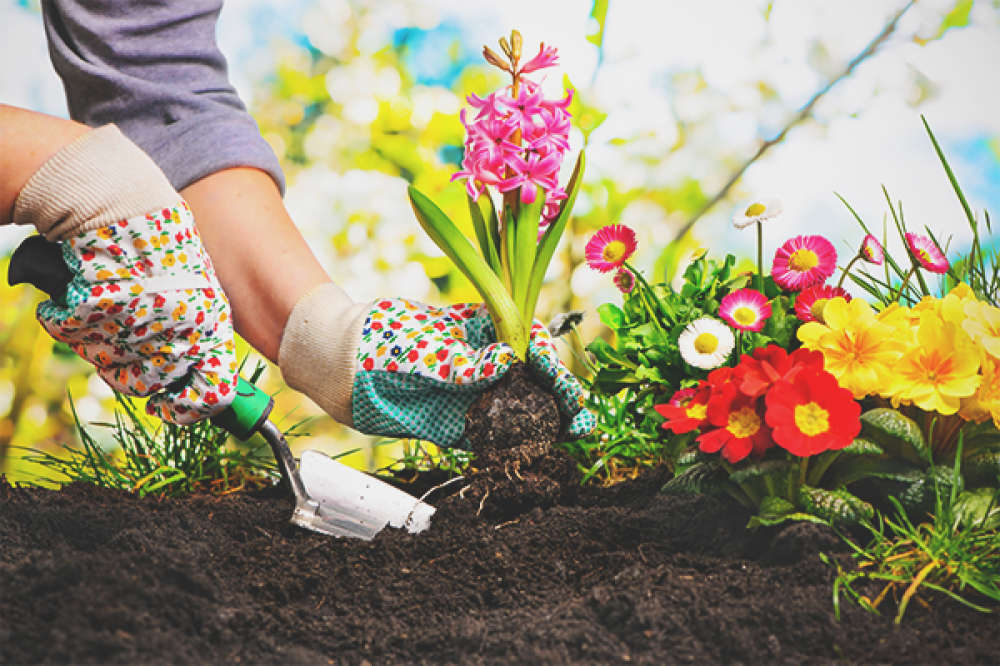From Beginner to Environment-friendly Thumb: A Step-by-Step Journey Through the Art of Horticulture

Recognizing Your Horticulture Space
To begin your gardening trip, it is essential to understand the one-of-a-kind attributes and constraints of your horticulture area. Are there any type of particular challenges you may deal with, such as bad soil top quality or limited water schedule? Understanding these variables will certainly assist you make informed decisions concerning the kinds of plants that will certainly flourish in your area.
Consider the dimension of your gardening location. You may require to focus on container horticulture or vertical horticulture to optimize your expanding area if you have a small area. On the other hand, if you have a huge area, you have the luxury of growing a variety of plants and creating different zones within your garden.
Following, review the quantity of sunlight your room receives. This will establish which plants will thrive and which ones might battle. You can decide for shade-loving plants like brushes or hostas if your room is shaded. If your space receives full sun, you can expand a large range of plants, including herbs, veggies, and blossoms.
Last but not least, take into consideration any kind of restrictions or challenges specific to your area. You might require to modify it with garden compost or choose plants that are forgiving of less-than-ideal conditions if your dirt top quality is poor. You can decide for drought-tolerant plants or apply water-saving methods like mulching. if water is limited.
Picking the Right Plant Kingdoms for Your Yard
Select plants that are appropriate to your garden's special conditions and your individual choices. When selecting plants for your yard, it is crucial to consider factors such as sunlight, dirt type, and climate. Some plants like well-drained soil, while others grow in clay-like or damp dirt.
It's also worth thinking about the maintenance level of the plants you choose. Some plants need even more care and attention, while others are more low-maintenance.
Preparing the Dirt for Planting
Many plants prefer a slightly acidic to neutral pH, around 6.0 to 7.0. Badly drained dirt can lead to water logged roots and other plant wellness problems. By evaluating and making essential modifications to your dirt, you can develop an optimal environment for your plants to grow.
Nurturing and Preserving Your Garden
As soon as you have prepared the dirt, it's time to get your hands unclean and start supporting and keeping your yard. The trick to an effective garden is consistent care and focus. Watering is crucial, particularly throughout dry spells. See to it to water your plants deeply, permitting the water to permeate the soil and get to the origins. Routine weeding is additionally important to maintain your garden devoid of undesirable plants that contend for nutrients and area. Draw out any kind of weeds, taking care to remove their roots to avoid them from returning. Additionally, it's important to give appropriate nourishment for your plants. Consider using organic plant foods or compost to enrich the soil and promote healthy and balanced development. Pruning is one more essential job to keep your yard looking neat see it here and motivate far better air flow and sunshine penetration. Trim off any kind of broken or dead branches to preserve the overall health and wellness of your plants. Ultimately, watch for parasites and conditions. Regularly inspect your plants for see this site any type of indications of problem or illness and take immediate activity to stop more damage. By following these nurturing and upkeep methods, you will certainly ensure a successful and gorgeous garden.
Troubleshooting Common Horticulture Issues
To address usual horticulture problems, beginning by identifying the trouble and taking immediate activity. One of the most usual problems gardeners deal with is parasites. If you observe eaten fallen leaves or plants that are shriveling for no noticeable factor, you may have an insect problem. Examine your plants closely for indicators of pests or other bugs. If you identify any kind of, eliminate them by hand or use organic parasite control techniques. Another typical trouble is nutrient shortage. If your plants have yellow or stained fallen leaves, they may not be obtaining sufficient nutrients. Consider fertilizing your soil or including garden compost to boost its vitamins and mineral content. Overwatering is an additional concern that can damage your plants. You may be overwatering if you notice waterlogged dirt or wilting regardless of sufficient watering. Adjust your watering timetable as necessary and make certain correct drain. Illness can additionally impact your yard. If you see areas, mold, or unusual growth on your plants, maybe a sign of illness. Get rid of influenced plants and deal with the remaining ones with organic fungicides or pesticides. By promptly attending to these common issues, you can guarantee the health and success of your yard.
Final Thought
By comprehending your gardening space, picking the right plants, preparing the dirt, and supporting your garden, you have actually overcome common horticulture issues go to my site like a pro. Now, armed with knowledge and experience, you are prepared to delight in the charm and wealth of your prospering garden.
When choosing plants for your yard, it is essential to take into consideration factors such as sunshine, soil type, and climate. Some plants like well-drained soil, while others grow in clay-like or moist soil (newbie gardening). By recognizing your gardening room, picking the right plants, preparing the soil, and nurturing your yard, you have actually gotten rid of usual gardening issues like a pro